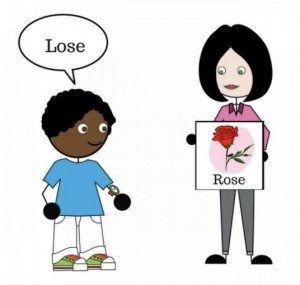
Typical Articulation Development in Children
Typical Articulation Development in Children
Articulation of speech sounds is a symptom of a developmental articulation issue.Children learn the different sounds of their language gradually over the first 8 years of life. They learn to combine words according to the rules or patterns they hear from adults in their environment. You might be surprised to know that children learn the sounds of their native language by nine months of age! But this doesn’t mean they must be producing these sounds correctly by nine months of age.
As they develop, their brain learns to organize the speech sounds they hear in the environment and produce them as and when their oral motor structures support them to produce more variety of speech sounds.
How can parents help their child with articulation difficulties?
When children are under age three, we can expect them to make a few articulation errors such as substituting more complex sounds such as ‘r’ with ‘l’. A two-year-old might say ‘thoti’ or’loti’ for ‘roti’ or ‘lellow’ for ‘yellow’. It is typical and acceptable for children under three years to substitute ‘s’, ‘z’, ‘sh’, ‘zh’, ‘ch’ and ‘j’ with earlier acquired sounds such as ‘t’, ‘d’, ‘th’, ‘l’.
By age four, most children will produce nearly all speech sounds correctly and will be understood by almost everyone around them. Speech intelligibility refers to the proportion of a speaker’s speech that a listener can easily understand.
According to research, here is a general rule of thumb for how intelligible your child should be at the following ages:
- At 2 years – 50% of the child’s speech should be intelligible
- At 3 years – 75% of the child’s speech should be intelligible
- At 4 years – 100% of the child’s speech should be intelligible
Children continue to master sounds such as /r/, /sh/, /s/, /ch/, /z/, voiceless /th/ until 8 years of age. By 8 years, 90% of the children master all the speech sounds in conversation.
When should parents be concerned about their child’s articulation?
- If you cannot understand what your child is saying to you
- By the age of four, your child should be able to communicate with strangers and unfamiliar adults.
- If you find yourself translating your child’s unclear speech to others.
- If your child exhibits frustration, refuses to repeat their responses or whispers, shouts or changes his or her voice quality when asked to repeat themselves.
- If your child refuses to communicate in certain situations fearing that they might be ridiculed or made fun of by friends or strangers.
Who can help and what does articulation treatment entail?
If you have the above concerns, seek advice and help from a speech-language pathologist who will assess your child’s speech language development and make recommendations accordingly. Articulation treatment will involve demonstrating how to produce the speech sounds correctly focusing on both the placement of lips, tongue etc. and the way the lips, tongue and jaw are moved, airflow and constrictions made to produce a speech sound correctly and practicing them in different words and working up to sentences and conversational speech.
Dos and Don’ts:
- When you do not understand your child’s speech, ask gently to repeat the utterance. You may say, “Oh, I didn’t quite hear what you said’ Can you tell me again?”. Use clues from the environment and if necessary, use pictures or visuals to help yourself and your child during interaction. Do not say ‘You didn’t say that correctly’ or ‘I don’t understand what you say’. Using negative language to correct your child may diminish your child’s confidence and he or she may begin to avoid interacting with you and others.
- Providing a correct adult model of articulation is important to your child. Praise your child’s attempts to produce correct speech sounds. Do not directly correct your child’s incorrect production as the child may become very conscious of his or her speech.
- Set aside some time to practice ‘good speech’ every day. Use pictures, toys or videos to label and talk about everyday things. During this time, use more descriptive and positive language to correct sounds, such as “S ssss is such a stretchy sound, I can see your tongue come out of your mouth when you say the s-sound” and so on.
- Do not drill the child, especially very young child to say and repeat the sounds correctly all the time. Use a variety of strategies such as repeating, modelling, praising what goes well and so on.
- Use a variety of activities such as labelling, games, reading, watching others talk to reinforce your targets with their articulation.
- Once your child has learnt to say a sound correctly, you may encourage them to use the sound in words. For example, you may ask them to find a word that has the sound ‘s’ or find objects in the house that begin with a ‘t’. This practice will encourage the child to gain more awareness and confidence in using the speech sounds.
- Discuss strategies and carry over activities you can do to help your child at home with your speech-language pathologist.
- Nonverbal Autism - December 22, 2022
- Spectrum of Hope: The New Normal - April 29, 2018
- Preschool Children’s Speech and Language Development: 2 to 6 years - April 16, 2018



Leave a Comment
(0 Comments)